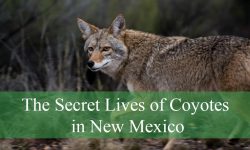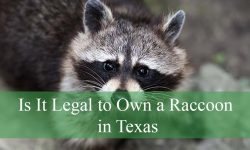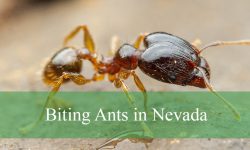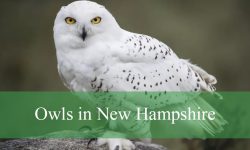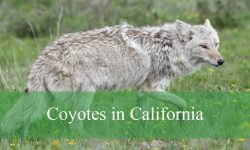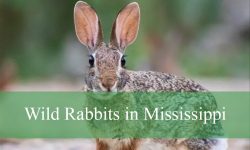Texas is home to a remarkable diversity of grasshoppers, ranging from small, green species hidden in meadows to large, brightly marked bird grasshoppers soaring across open fields. These insects play an important role in the ecosystem as both herbivores and a food source for many animals.
While most grasshoppers feed quietly on grasses and weeds, several species are known to cause serious agricultural damage. Farmers often encounter them in large numbers during hot, dry summers when crops and pastures provide abundant food. Identifying different species can help in understanding which ones pose the greatest risks to plants.
From the colorful Eastern Lubber to the swift-flying Carolina Grasshopper, Texas offers some of the most fascinating grasshopper species in North America. Observing them in the wild provides insights into their behaviors, habitats, and seasonal patterns.
Different Types of Grasshoppers Found in Texas
Eastern Lubber Grasshopper (Romalea microptera)
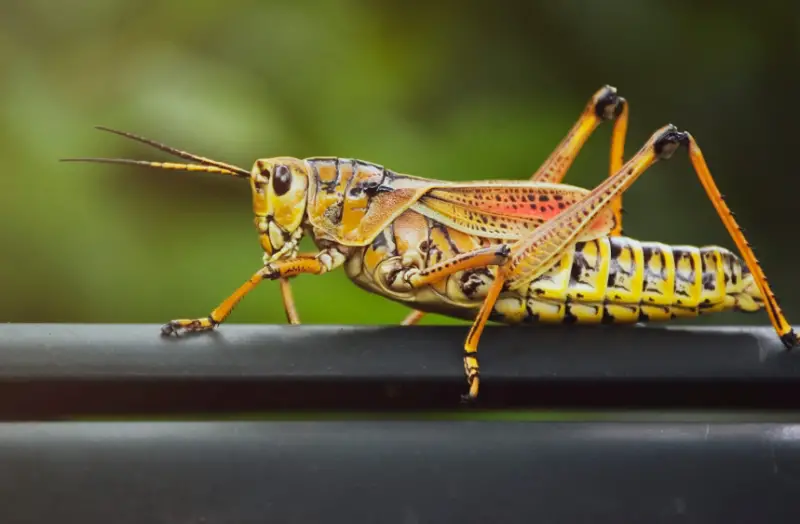
The Eastern Lubber Grasshopper is one of the largest and most recognizable grasshoppers in Texas. Adults can reach up to 3 inches in length and display bright coloration ranging from yellow with black markings to red and orange variations. Their large size, slow movements, and striking appearance make them quite distinct compared to other grasshopper species in the region.
This species is not strong at flying and instead relies on walking or short hops to move around. Despite their clumsy movements, they have strong mandibles and feed on a wide variety of plants, often causing significant damage to gardens and crops when present in large numbers. Their bright coloration also acts as a warning to predators that they are toxic or distasteful.
Lubbers secrete a foul-smelling foam when threatened, which deters birds, lizards, and small mammals. This chemical defense, combined with their aposematic colors, makes them less likely to be eaten. They are often observed basking in sunny areas, especially during late summer and early fall.
In Texas, Eastern Lubbers are most common in the eastern and southern regions where warm, humid conditions prevail. They thrive in grassy fields, open woods, and farmlands, making them a familiar sight to many Texans during the peak of their activity in the summer months.
American Grasshopper (Schistocerca americana)
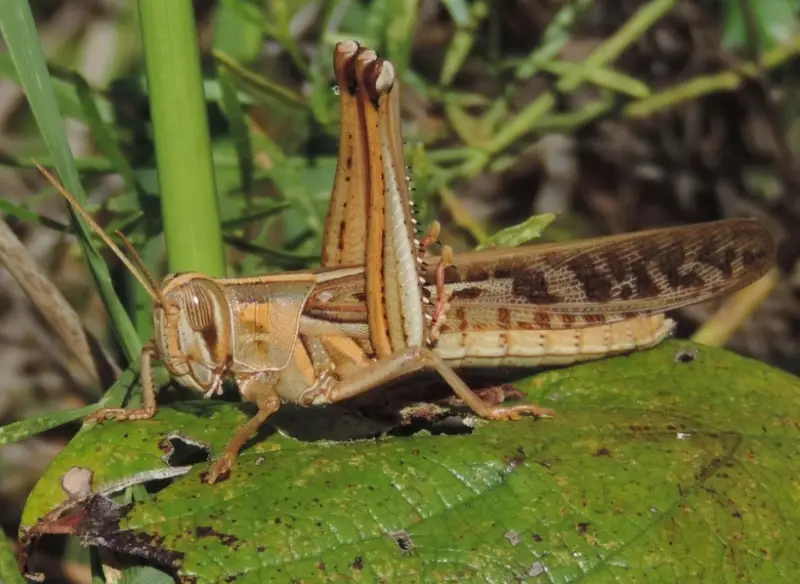
The American Grasshopper is another large species found across Texas, particularly abundant in agricultural regions. Adults can grow up to 2 inches long and typically display a light brown to green coloration with mottled patterns that help them blend into vegetation. Their wings are well developed, allowing them to fly long distances, which makes them highly mobile pests.
This species is known for forming large swarms that can devastate crops, especially grains and vegetables. They feed on leaves, stems, and flowers, leaving behind skeletonized plants when infestations are severe. Their strong jaws and group-feeding behavior contribute to their destructive potential.
American Grasshoppers are very active during the day, especially in sunny weather. They are powerful fliers and can be seen rising in large numbers when disturbed in fields. Their behavior and appearance are often mistaken for locusts, though they do not undergo the same dramatic phase changes.
In Texas, they are widely distributed, especially in central and eastern parts of the state. They thrive in fields, pastures, and roadsides, and are most noticeable during summer and early fall when populations peak. Farmers often consider them one of the most economically important grasshopper pests in the region.
Differential Grasshopper (Melanoplus differentialis)
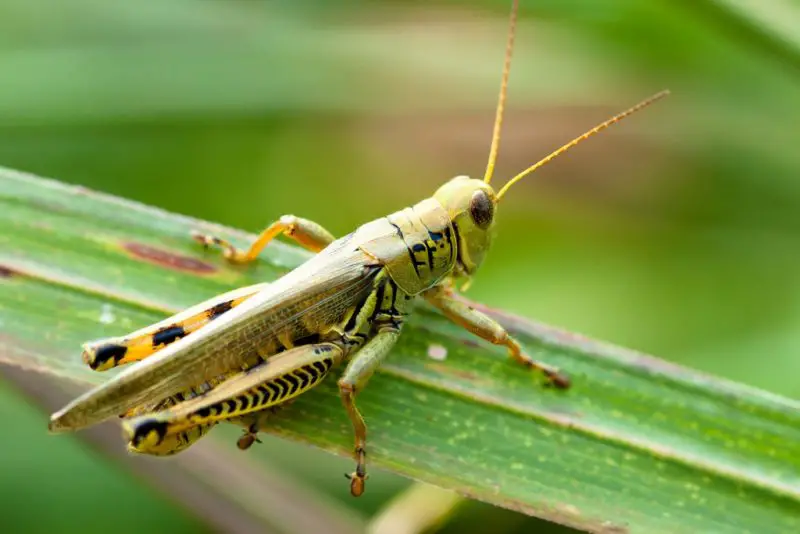
The Differential Grasshopper is a medium-to-large species, usually about 1.5 to 2 inches long, with a green or yellowish body marked by dark herringbone-like patterns on its hind legs. It is easily identified by these leg markings, which stand out compared to other common grasshoppers in Texas.
This grasshopper is highly destructive to crops such as corn, soybeans, and cotton. Its feeding habits include chewing leaves, stems, and even young shoots, which can greatly reduce crop yields. In high-density years, Differential Grasshoppers can cause widespread agricultural damage.
They are strong fliers and very active during hot, sunny days. Unlike some slower species, they quickly leap or fly when disturbed, making them harder to catch or observe closely. Their large numbers and fast reproduction cycles allow populations to expand rapidly under favorable conditions.
In Texas, Differential Grasshoppers are widespread, particularly in farming areas across central and northern parts of the state. They prefer open fields, meadows, and croplands, where they can easily access their preferred food sources. Populations typically surge in late summer and remain active into early fall.
Carolina Grasshopper (Dissosteira carolina)
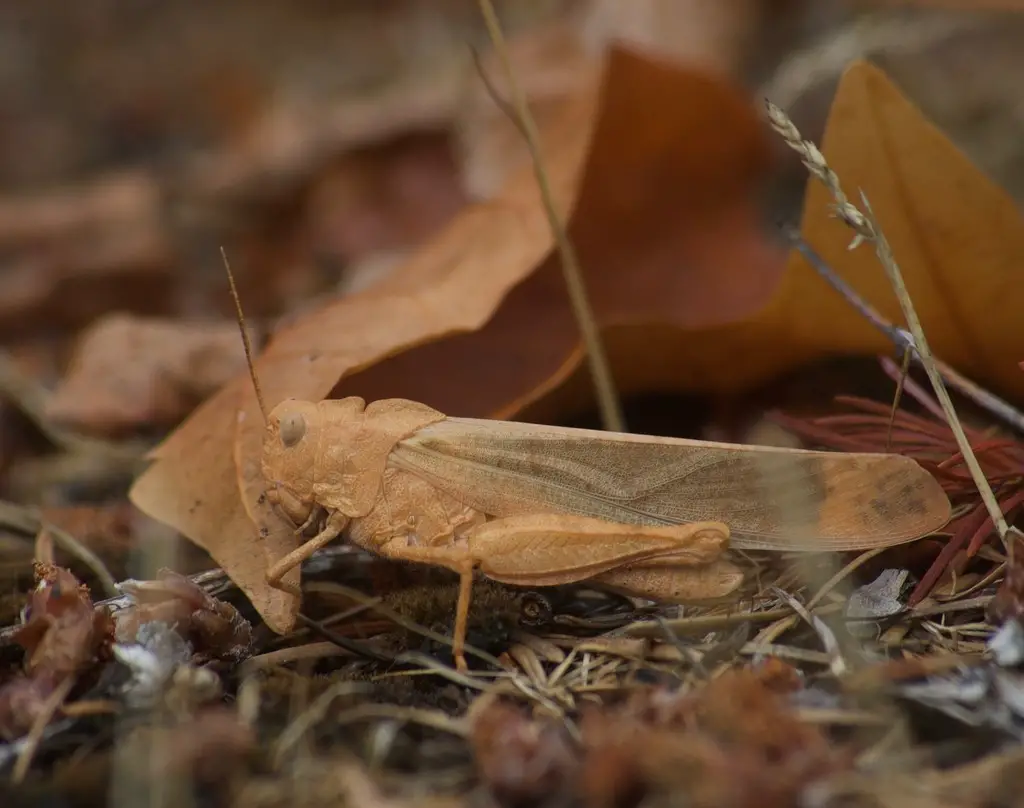
The Carolina Grasshopper, also called the Black-winged Grasshopper, is well known for its dramatic flight display. When resting, it blends into its surroundings with a grayish or brown body, but when it takes flight, it reveals striking black hind wings bordered with yellow. Adults typically measure about 1.5 to 2 inches in length.
This species prefers open, dry habitats such as fields, roadsides, and sandy soils. They are often seen basking on bare ground or gravel roads, where their camouflage helps them remain unnoticed until disturbed. Their quick, strong flight makes them more elusive than other species.
Carolina Grasshoppers primarily feed on grasses and forbs but are not considered as significant agricultural pests compared to other large species. Their feeding is more localized and usually does not reach damaging levels, although large populations can still stress plants.
In Texas, they are widely distributed and especially common in dry, open landscapes throughout the state. They are most active during the hottest months, often from late spring through early fall, making them a common sight in rural and suburban areas.
Spotted Bird Grasshopper (Schistocerca lineata)

The Spotted Bird Grasshopper is a large and powerful flier, commonly found across much of Texas. Adults can grow up to 2.5 inches long and are typically brown or tan with darker spots and streaks along their bodies. Their size and strong wings make them one of the more noticeable grasshopper species in open habitats.
This species is a generalist feeder, consuming a wide variety of grasses, weeds, and crops. While they are not as infamous as the American Grasshopper in terms of crop destruction, they can still cause localized damage when present in large numbers. Their strong mandibles allow them to chew through tough vegetation with ease.
Spotted Bird Grasshoppers are highly mobile and can travel long distances when disturbed. They are quick to take off in flight, making them difficult to approach. Their common name reflects their bird-like flight pattern, which is both strong and sustained compared to the short hops of smaller species.
In Texas, they are found in grasslands, pastures, and prairies throughout the state, especially during summer and fall. They are often observed resting on tall grasses or flying across open fields, where their large size and strong wings make them easy to notice.
Obscure Bird Grasshopper (Schistocerca obscura)
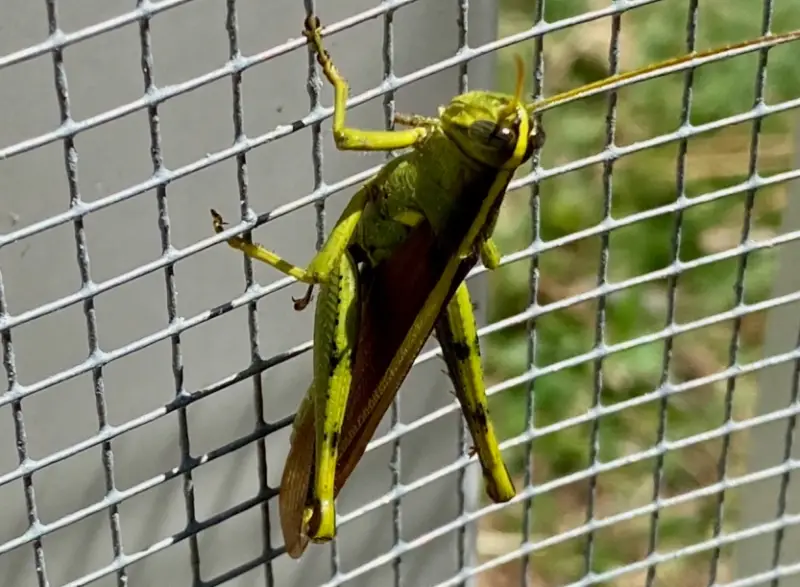
The Obscure Bird Grasshopper is one of the largest grasshoppers in Texas, often reaching lengths of 2.5 to 3 inches. It has a generally brown or gray body with faint, streaked markings, which gives it a more muted appearance compared to the brightly patterned Spotted Bird Grasshopper. Its wings are long and strong, making it an excellent flier.
This grasshopper is a voracious feeder, consuming leaves of grasses, weeds, and cultivated crops. Though it does not usually form massive swarms, its large size and strong jaws allow it to inflict serious localized damage when populations are high. Farmers sometimes view it as a pest due to its tendency to target grains and forage plants.
Behaviorally, Obscure Bird Grasshoppers are alert and quick to take flight when approached. They fly in long, straight paths, sometimes traveling significant distances. Their strong flight ability makes them more mobile than many other Texas grasshoppers, which often rely on short hopping movements.
In Texas, this species is widespread in grasslands, farmlands, and open prairies, especially in the central and southern parts of the state. They are most active during late summer and early fall, when warm, dry conditions support their peak activity and feeding.
Two-striped Grasshopper (Melanoplus bivittatus)
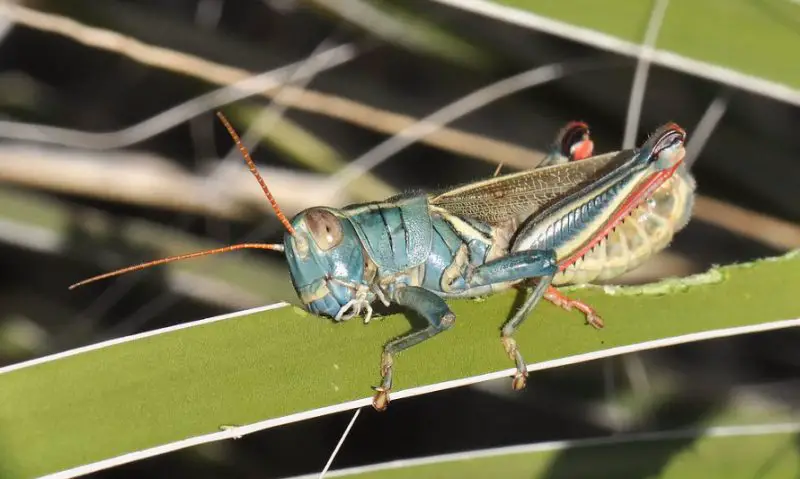
The Two-striped Grasshopper is a medium to large species, usually measuring 1.5 to 2 inches long. Its most distinguishing feature is the pair of pale yellow stripes that run from the eyes down the length of the body. This clear identification mark makes it easy to tell apart from other green or brown grasshoppers in Texas.
This species is known as one of the most destructive crop-feeding grasshoppers in North America. It feeds on a wide range of plants, including grains, vegetables, and forage crops. When present in large numbers, they can cause significant defoliation and reduce crop yields drastically.
Two-striped Grasshoppers are strong jumpers and fliers, often dispersing quickly when disturbed. They are very active during the heat of the day, feeding openly on plant foliage. Their fast movement and alert behavior make them difficult to capture or control without large-scale measures.
In Texas, they are common across agricultural regions, particularly in central and northern areas. They thrive in open farmland, roadsides, and weedy areas where food is plentiful. Outbreaks usually occur in late summer, making them a serious concern for farmers and gardeners alike.
Red-legged Grasshopper (Melanoplus femurrubrum)
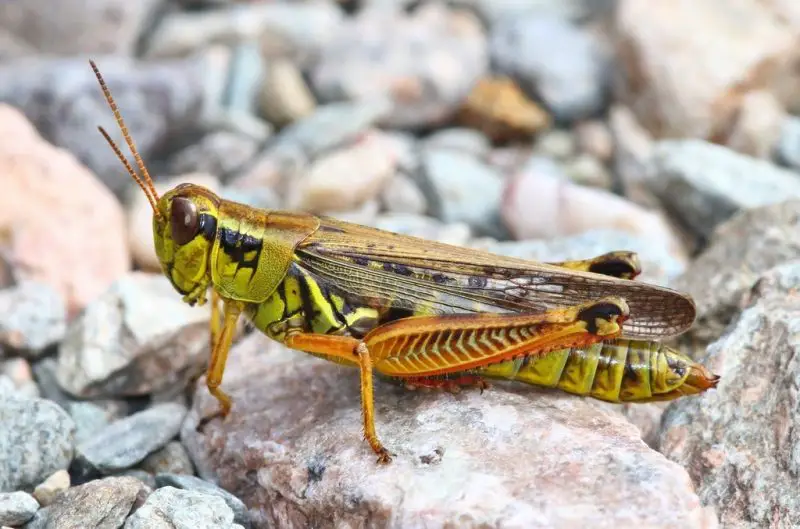
The Red-legged Grasshopper is a smaller but very common species in Texas, averaging about 1 to 1.5 inches in length. It has a brownish body with a reddish tint on its hind legs, which gives it its common name. This subtle yet distinctive feature makes it easy to recognize in the field.
Despite its small size, the Red-legged Grasshopper can be highly destructive due to its enormous population numbers. It feeds on grasses, clover, alfalfa, and garden plants, making it a frequent pest in both agricultural and suburban environments. Large outbreaks can cause serious damage to pastures and crops.
These grasshoppers are active during the day, often basking in sunny spots. They are quick to hop or fly short distances when disturbed, making them difficult to spot until they suddenly scatter. Their fast breeding cycle also contributes to rapid population growth.
In Texas, Red-legged Grasshoppers are found statewide, thriving in meadows, farmlands, and grassy open areas. They are especially abundant during late summer and early fall, when their numbers peak and damage to vegetation is most noticeable.
Packard’s Grasshopper (Melanoplus packardii)
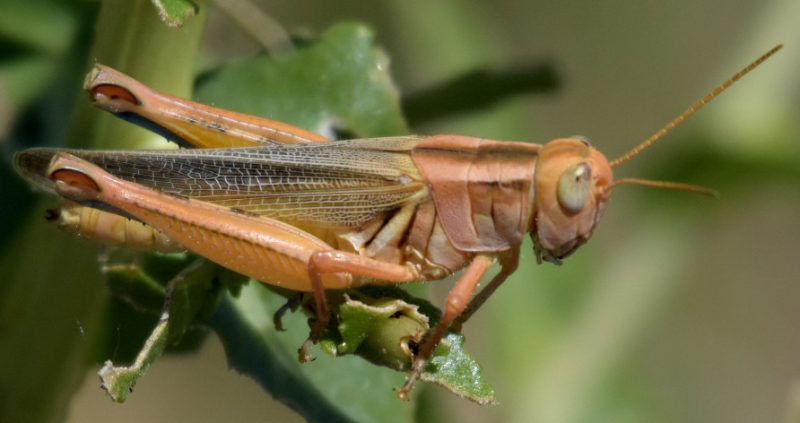
Packard’s Grasshopper is a medium-sized species, usually about 1.5 inches long, with a brown to grayish body often marked by darker stripes or mottling. Its coloration helps it blend into dry soils and vegetation, making it less noticeable than more brightly marked species.
This grasshopper is a heavy feeder on rangeland and agricultural crops, consuming grasses, alfalfa, and cereal grains. It can cause significant damage to forage fields when present in large numbers, making it an economic concern in Texas ranching and farming regions.
Packard’s Grasshoppers are less mobile than bird grasshoppers but are strong jumpers. They typically move in short hops and feed close to the ground. Their ability to feed on both native grasses and cultivated crops allows them to thrive in diverse environments.
In Texas, they are widespread, especially in the northern and western regions where grasslands and farmland dominate the landscape. Their populations peak during warm months, with outbreaks sometimes lasting well into autumn.
Migratory Grasshopper (Melanoplus sanguinipes)
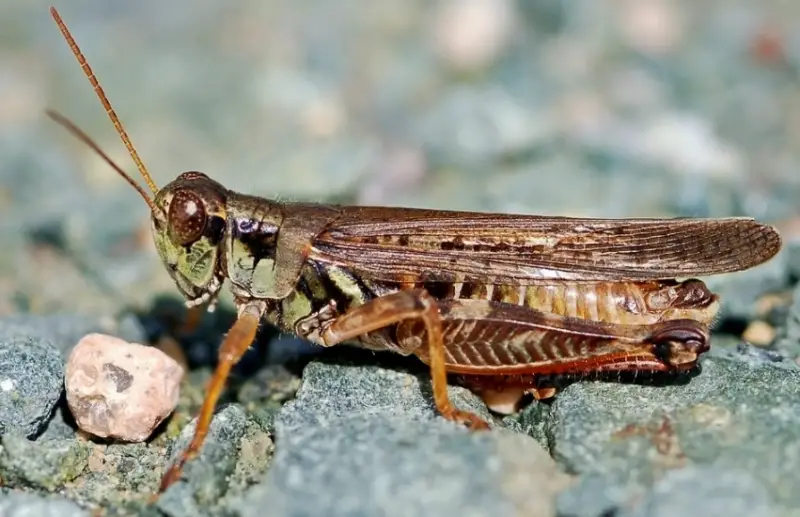
The Migratory Grasshopper is one of the most economically important grasshoppers in Texas and across North America. Adults usually measure around 1 to 1.5 inches and are brown or tan with darker markings, making them well-camouflaged in open fields and dry landscapes.
This species is notorious for its ability to form large outbreaks that devastate crops and rangelands. It feeds on nearly all types of vegetation, including grains, vegetables, and forage crops. When populations reach high densities, they can strip fields bare, similar to locust behavior.
Migratory Grasshoppers are very active fliers and capable of traveling long distances in search of food. Their mobility makes them difficult to control, as they can move from one area to another quickly and spread damage across wide regions.
In Texas, they are particularly abundant in northern and western areas, where open rangelands provide ideal habitats. Outbreaks often occur during hot, dry summers, making them one of the most concerning grasshopper pests for farmers and ranchers in the state.
Texas Spur-throat Grasshopper (Aidemona azteca)
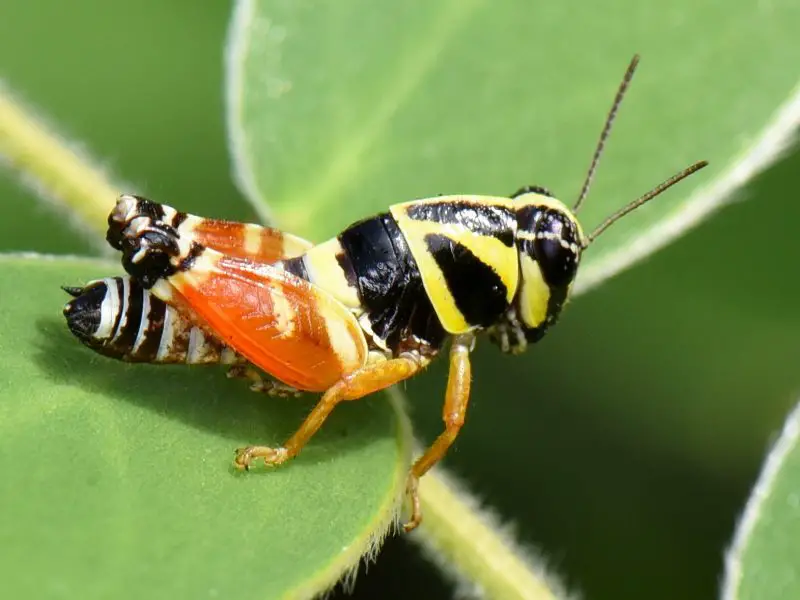
The Texas Spur-throat Grasshopper is a medium-to-large species commonly found in the southern regions of Texas. Adults measure between 1.5 and 2 inches in length, with a brown or gray body and subtle striping that provides camouflage in grassy or rocky habitats. Like other spur-throated grasshoppers, it has a small spine-like projection between its front legs, which is a key identifying feature.
This species feeds on a variety of grasses and forbs, making it an occasional pest in rangelands and pastures. While it does not usually occur in massive swarms like some other grasshoppers, localized outbreaks can lead to noticeable damage in forage fields and natural grasslands.
Behaviorally, Texas Spur-throat Grasshoppers are strong jumpers and capable of short flights. They are most active during hot, sunny days and can often be seen perched on grass stems or bare ground. Their camouflage makes them difficult to spot until they leap away.
In Texas, they are most commonly found in the southern and central parts of the state, especially in prairies, pastures, and scrublands. Populations rise during the summer and remain active into the fall, with the highest numbers appearing in warm, dry conditions.
Wrinkled Grasshopper (Hippiscus ocelote)
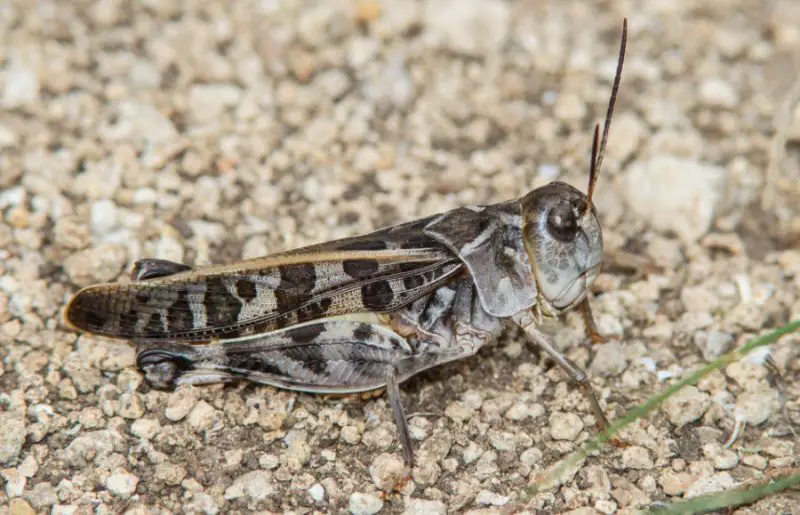
The Wrinkled Grasshopper is a striking species found across much of Texas, easily recognized by its large size and colorful flight display. Adults typically measure between 1.5 and 2 inches long, with a mottled brown or gray body that blends well into dry soils, gravel, and rocky landscapes. At rest, their cryptic coloring makes them nearly invisible against the ground, but once disturbed, they reveal vivid hind wings that are yellow, orange, or red with a bold black border.
This species is a member of the band-winged grasshopper group, known for their dramatic wing patterns. The Wrinkled Grasshopper gets its name from the wrinkled or textured appearance of its forewings, which sets it apart from other grasshoppers. Their sudden flashes of color when flying often startle predators and also help observers quickly identify them in the field.
Wrinkled Grasshoppers feed primarily on grasses and native weeds, making them more of a background grazer than a major agricultural pest. While they can occasionally feed in crop areas, they rarely reach the damaging population levels seen in species like the Differential or Migratory Grasshopper. Their feeding activity plays a role in maintaining plant diversity within rangeland ecosystems.
In Texas, Wrinkled Grasshoppers are especially common in sandy prairies, open woodlands, and dry grasslands throughout the central and western parts of the state. They are most active during the hot summer months and early fall, when their flight displays are frequently seen as they take off from bare ground or low vegetation. Observers often notice them along trails, open fields, and roadside clearings.
Southern Green-striped Grasshopper (Chortophaga australior)
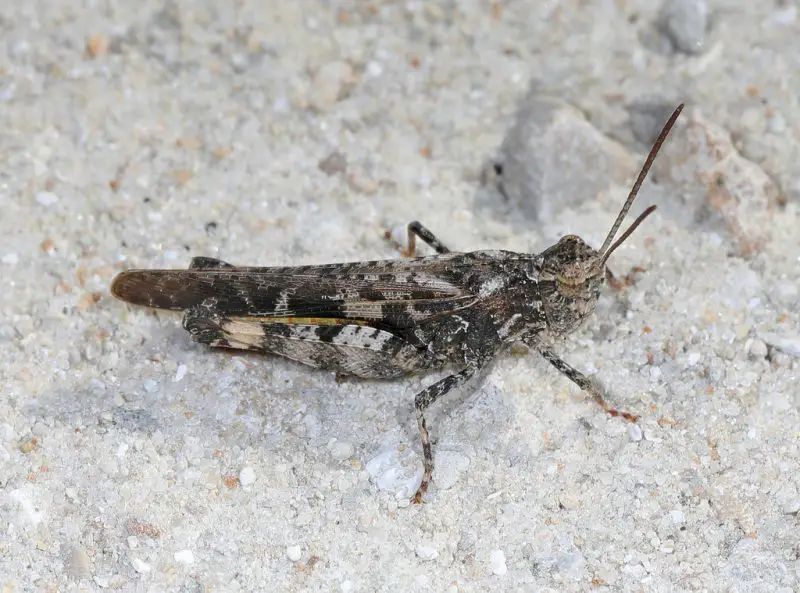
The Southern Green-striped Grasshopper is a small to medium species, generally ranging from 0.75 to 1.25 inches in length. It is easily recognized by its green body with lighter or darker striping along its wings and back, though some individuals may appear more brownish depending on their habitat.
Unlike some of the more destructive species, this grasshopper feeds mainly on grasses and weeds in open fields. While it is not typically considered a major agricultural pest, it may contribute to plant damage when populations are high, especially in pastures.
This species is an agile jumper and a moderate flier, often moving in quick bursts when disturbed. Its bright green coloration makes it visible in lush vegetation, but it can blend well into grasses, making it difficult to notice until it leaps away.
In Texas, Southern Green-striped Grasshoppers are found across much of the state, especially in meadows, fields, and grassy roadside habitats. They are most active in spring and summer, with populations often peaking earlier than other grasshoppers.
Short-winged Green Grasshopper (Dichromorpha viridis)
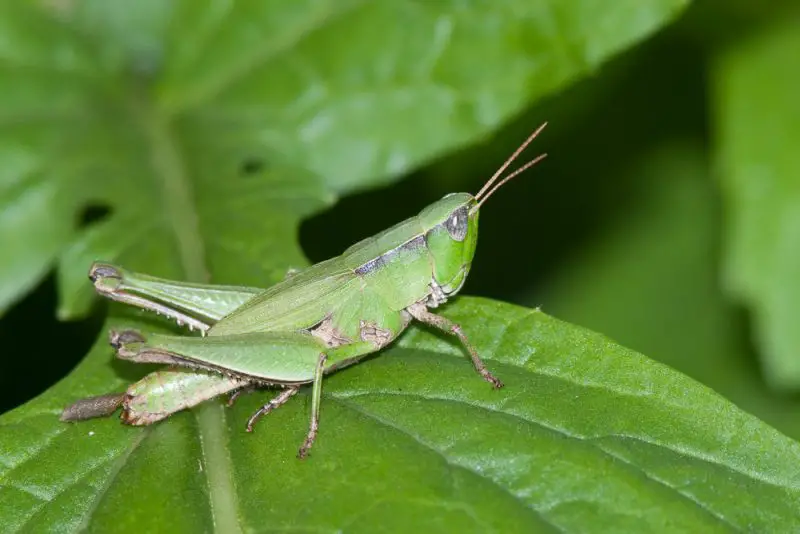
The Short-winged Green Grasshopper is a smaller species, usually less than 1 inch in length. As its name suggests, it is bright green in color and has shortened wings compared to other grasshoppers, which limits its flying ability. Some individuals may have slightly longer wings, but most are weak fliers and rely mainly on hopping.
This species feeds on grasses and small herbaceous plants, making it a common inhabitant of meadows, lawns, and pastures. It is not considered a serious pest, but large numbers may contribute to localized vegetation loss in heavily grazed areas.
Because of its smaller size and limited flight, the Short-winged Green Grasshopper tends to stay close to the ground. They are quick jumpers and often disappear into grass clumps when disturbed. Their vivid green coloration helps them stay hidden among vegetation.
In Texas, they are widespread in grassy areas throughout the state, especially in moist meadows, fields, and suburban lawns. Their activity peaks in late spring and summer, and they are most noticeable in areas with dense green vegetation.
Longhorn Band-winged Grasshopper (Psinidia fenestralis)
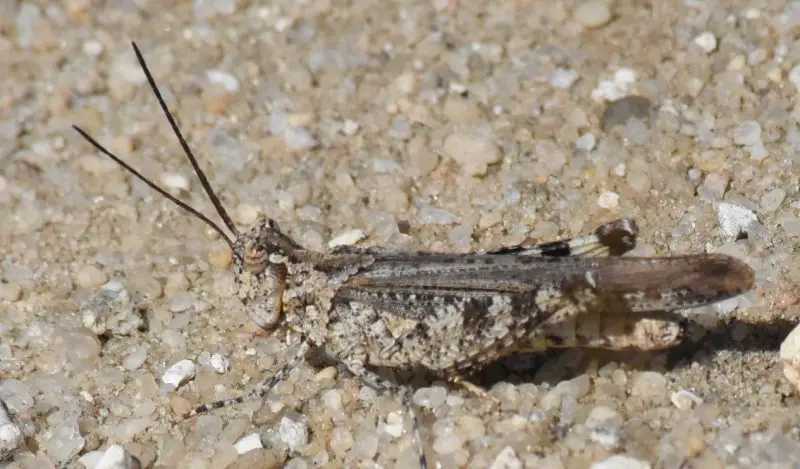
The Longhorn Band-winged Grasshopper is a medium-sized species, typically about 1 to 1.5 inches long, with mottled gray and brown coloration that helps it blend into sandy and rocky soils. Its name comes from its long antennae, which are more prominent than those of many other grasshopper species.
When at rest, this species appears well camouflaged, but in flight, it reveals patterned hind wings that can include shades of black and white. This sudden display often startles predators and makes it easier to identify in the field.
The Longhorn Band-winged Grasshopper feeds primarily on grasses and weedy plants. While it is not considered a major agricultural pest, it plays a role in natural ecosystems by controlling weed growth and serving as prey for birds and small mammals.
In Texas, this species is especially common in sandy prairies, open fields, and dry, rocky habitats. It is most active during the hottest months of summer, and its striking flight pattern makes it one of the more noticeable grasshoppers in open landscapes.
Best Time and Places to Observe Grasshoppers in Texas
Grasshoppers in Texas are most active during the warmer months, with peak populations usually appearing from late spring through early fall. The hot and dry summer weather provides ideal conditions for their development, and by late July to September, their numbers reach the highest levels. This is the best time to observe both adult and juvenile grasshoppers in the field.
Open grasslands, prairies, farmland edges, and meadows are the best places to spot grasshoppers in Texas. Many species prefer sunny, open areas with tall grasses and weeds, while others are more common in agricultural landscapes where crops provide abundant food. Roadsides, pastures, and even suburban lawns can also harbor high numbers of grasshoppers during peak season.
For those interested in identifying different species, visiting rangelands, sandy soils, and dry fields in central and western Texas offers the best chances of encountering the larger bird grasshoppers like the Spotted and Obscure species. Meanwhile, smaller species such as the Short-winged Green Grasshopper are more easily found in lush meadows and wetland edges across the state.
FAQs about Grasshoppers in Texas
What months are grasshoppers most active in Texas?
Grasshoppers are most active from late spring through early fall, with populations peaking during the hot summer months, especially in July, August, and September.
Are grasshoppers in Texas harmful to crops?
Yes, some species such as the Differential Grasshopper, American Grasshopper, and Migratory Grasshopper are serious agricultural pests. They feed on grains, vegetables, and forage crops, sometimes causing severe damage during outbreaks.
Do all grasshoppers in Texas fly?
Not all grasshoppers are strong fliers. Species like the Short-winged Green Grasshopper have limited flight due to shortened wings, while bird grasshoppers such as the Spotted and Obscure species are powerful fliers capable of long-distance travel.
Where can I find grasshoppers in Texas?
Grasshoppers are common in open fields, grasslands, pastures, and farmlands throughout Texas. They are also frequently seen along roadsides, meadows, and even suburban lawns during peak season.
Do grasshoppers in Texas bite humans?
Grasshoppers are not aggressive and rarely bite humans. While they have strong mandibles used for chewing plants, they generally do not pose a threat to people unless handled roughly.

